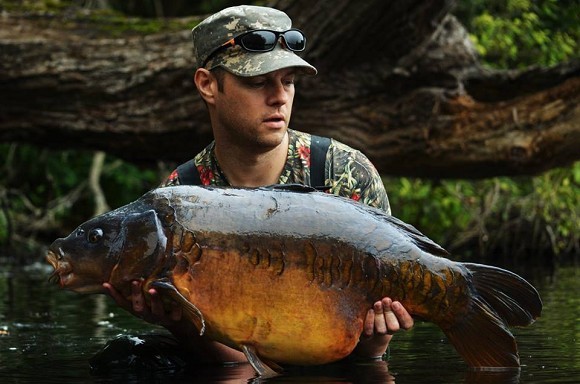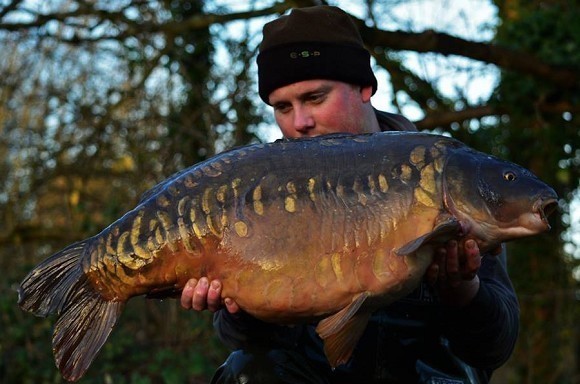
Should historical venues be restocked?
There are numerous historical and iconic fisheries in the country whose fish stocks are diminishing due to age and no new gene pools being introduced.
There are numerous historical and iconic fisheries in the country whose fish stocks are diminishing due to age and no new gene pools being introduced. We are aware of the risks of endangering these fish by the introduction of new stock, even those coming from very reputable breeders; the stress can often be enough to cause the indigenous population to suddenly die. What do you think is the answer to what is a very delicate situation? If stocking does not take place then surely the demise of many of these fisheries will occur?
Rich Wilby
“This is a very sensitive question and one that I guess has no perfect solution. I have seen many successful stockings and some that unfortunately have been disastrous for the carp and anglers involved. I’m in a strange position at the moment on my own fishery, as Spitfire Pool is a prime example of a special little water with some very rare, old and big precious carp in it. I would dearly love to put a few young stockies in there as I know my existing stock are “long in the tooth” and I know that some special stockies, like the ones produced by my friends Viv Shears and Simon Scott, would thrive in such a rich water. But I don’t dare put any new fish in at the moment, because simply changing the stocking density, even just by a couple of carp, can upset the balance I have and could result in stress for the older fish. And the trouble with stress is that it affects the immune system of a fish making it weaker.
“So for me and my business I have to take a gamble if I want big carp to come through. If I don’t gamble I will have to wait until nature takes its course. But not being able to plan is hard for any business so it’s a very tricky situation.
“Now on my other venue, Mustang Lake, I am determined to not let this situation occur. Mustang Lake is a six-year-old specimen carp water, the fish are big, mainly 25lb-35lb, but they are still young. On this lake I have a stocking policy where every couple of years I plan to introduce new fish. Not many, say six to ten at a time. These will be very special carp and most likely between 15 and 22lb. By doing this I hope that there will never just be an ageing population of fish that I then feel are too precious to add younger carp to.
“Quality young carp are expensive, so by adding a few every couple of years I’m hoping I will not be in a situation where I completely need to restock a lake in one go. In the last decade I have seen some very historical venues disappear or be transformed into a new style of fishery. It is sad for anglers of my generation but it has to happen in many cases for the water to exist as a fishery. All I wish sometimes is that a little bit of respect and thought went into some of these venues before they simply stuff them with any old carp. There are so many good breeders around that as fishery owners we have never had such a good choice of amazing fish to pick from. Quality over quantity is the best advice I can offer anyone who is thinking of stocking a specimen water. If people pick their carp wisely the future of carp fishing in the UK will be mega.”
Gaz Fareham
“This is such a tough question, and one that has probably seen more heated debate than any other in carp fishing. I have seen a few sides to the coin first hand and if I’m completely honest, am still not sure where I sit on the matter. When I fished The Car Park, there had been no deaths for a good few years, the big six were seemingly pretty happy until it got a new stocking. The following year Heather and Pearly died, followed by the Dustbin. Was it the stockies? Maybe, maybe not. It certainly seemed coincidental but then again it is easy to judge without sound knowledge. Same has just happened closer to home, no significant deaths ever in the history of a pit, it gets a stocking and suddenly a significant percentage of the stock die unexplained deaths, again, the jury is out on that one. Horton, the Road Lake… There are lots more similar instances.
“I absolutely believe we have to think about the future, and not cling to old history fish, but whichever way you look at it, new ones and old ones just do not seem to mix very well. The only viable answer is maybe to run a fishery like Simon does at Dinton, that sees new stock every year without fail but just on a small, drip-fed scale, that way the year groups become integrated and there’s always new blood coming through. That, however, is a long-term project and ethos of managing a lake, needing time and commitment to see through. Unfortunately that still leaves no concrete options or answers for the lakes with a few precious old ones in, other than the game of Russian Roulette that stocking sometimes seems sadly to be.”



